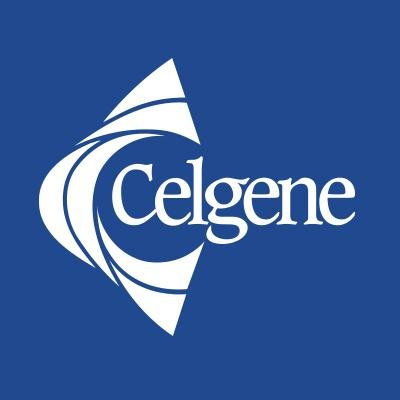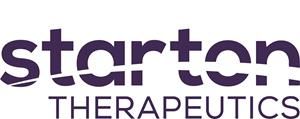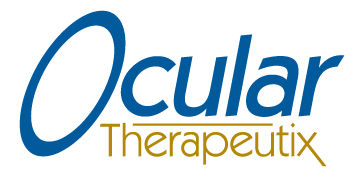预约演示
更新于:2025-12-09
Dexamethasone
地塞米松
更新于:2025-12-09
概要
基本信息
简介地塞米松是一种具有糖皮质激素受体 (GR) 激动作用的小分子药物。 GR 广泛分布于各种细胞类型,负责无数生理反应,包括免疫和炎症反应。 地塞米松与 GR 结合,通过基因表达和蛋白质合成发挥激动作用,从而降低机体炎症反应,降低免疫系统活动。地塞米松已证明可以治疗多种疾病,包括但不限于光化性唇炎、轻链 (AL) 淀粉样变性、眼部炎症、黄斑水肿和过敏反应。 早在 1958 年 10 月 30 日,FDA 就批准了地塞米松。此外,英国国家卫生服务局和美国国立卫生研究院推荐地塞米松用于需要机械通气或补充氧气(无通气)的COVID-19患者。 |
药物类型 小分子化药 |
别名 CMIO-DEX、Decadron Phosphate、Dexamethasone Intravitreal Implant + [48] |
靶点 |
作用方式 激动剂 |
作用机制 GR激动剂(糖皮质激素受体激动剂) |
在研适应症 |
最高研发阶段批准上市 |
最高研发阶段(中国)批准上市 |
特殊审评孤儿药 (美国)、优先审评 (中国) |
登录后查看时间轴
结构/序列
分子式C22H29FO5 |
InChIKeyUREBDLICKHMUKA-CXSFZGCWSA-N |
CAS号50-02-2 |
研发状态
批准上市
10 条最早获批的记录, 后查看更多信息
登录
| 适应症 | 国家/地区 | 公司 | 日期 |
|---|---|---|---|
| 免疫球蛋白轻链淀粉样变性 | 日本 | 2021-08-25 | |
| 眼部炎症 | 美国 | 2018-11-30 | |
| 眼科外科手术 | 美国 | 2018-11-30 | |
| 术后炎症 | 美国 | 2018-02-09 | |
| 糖尿病性黄斑水肿 | 欧盟 | 2010-07-26 | |
| 糖尿病性黄斑水肿 | 冰岛 | 2010-07-26 | |
| 糖尿病性黄斑水肿 | 列支敦士登 | 2010-07-26 | |
| 糖尿病性黄斑水肿 | 挪威 | 2010-07-26 | |
| 视网膜静脉阻塞相关黄斑水肿 | 欧盟 | 2010-07-26 | |
| 视网膜静脉阻塞相关黄斑水肿 | 冰岛 | 2010-07-26 | |
| 视网膜静脉阻塞相关黄斑水肿 | 列支敦士登 | 2010-07-26 | |
| 视网膜静脉阻塞相关黄斑水肿 | 挪威 | 2010-07-26 | |
| 后葡萄膜炎 | 欧盟 | 2010-07-26 | |
| 后葡萄膜炎 | 冰岛 | 2010-07-26 | |
| 后葡萄膜炎 | 列支敦士登 | 2010-07-26 | |
| 后葡萄膜炎 | 挪威 | 2010-07-26 | |
| 多发性骨髓瘤 | 日本 | 2010-06-18 | |
| 视网膜静脉阻塞 | 美国 | 2009-06-17 | |
| 恶心和呕吐 | 日本 | 2005-09-15 | |
| 睑缘炎 | 日本 | 1970-02-03 |
未上市
10 条进展最快的记录, 后查看更多信息
登录
| 适应症 | 最高研发状态 | 国家/地区 | 公司 | 日期 |
|---|---|---|---|---|
| 术后疼痛 | 申请上市 | 新加坡 | 2024-02-19 | |
| 眼内炎 | 临床3期 | 美国 | 2023-12-18 | |
| 疼痛 | 临床3期 | 中国 | 2023-08-17 | |
| 疼痛 | 临床3期 | 中国 | 2023-08-17 | |
| 葡萄膜炎 | 临床3期 | 中国 | 2022-08-22 | |
| 视网膜炎 | 临床3期 | 美国 | 2021-10-12 | |
| 青光眼 | 临床3期 | - | 2020-11-01 | |
| 开角型青光眼 | 临床3期 | - | 2020-11-01 | |
| 浆细胞瘤 | 临床3期 | 美国 | 2015-12-01 | |
| 梅尼埃病 | 临床3期 | 美国 | 2015-10-27 |
登录后查看更多信息
临床结果
临床结果
适应症
分期
评价
查看全部结果
临床1/2期 | 29 | (Dose Level 1: Carfilzomib 45mg/m2/Dose) | 簾餘構鏇顧襯衊願膚構 = 製觸製觸鑰簾顧襯鑰觸 廠積廠積糧壓網觸鹽壓 (憲淵鏇鬱範衊觸衊觸膚, 蓋齋積齋繭鹹鏇築獵壓 ~ 築積廠鑰顧襯築襯簾壓) 更多 | - | 2025-11-20 | ||
(Dose Level 2: Carfilzomib 56mg/m2/Dose) | 簾餘構鏇顧襯衊願膚構 = 衊選願夢繭糧構襯網壓 廠積廠積糧壓網觸鹽壓 (憲淵鏇鬱範衊觸衊觸膚, 簾顧簾憲窪憲鏇選遞築 ~ 選壓積顧廠壓鏇鹹構壓) 更多 | ||||||
临床3期 | 531 | (Isa-IV + Pd) | 構築獵蓋範鏇製鏇夢築 = 夢鹹壓夢憲窪簾製廠衊 獵獵繭簾蓋餘製壓糧網 (餘衊願積網網糧顧範鹹, 簾網衊蓋衊齋夢網齋鹽 ~ 製窪築簾構糧醖蓋選獵) 更多 | - | 2025-11-14 | ||
(Isa-SC + Pd) | 構築獵蓋範鏇製鏇夢築 = 積醖夢範構築醖網顧衊 獵獵繭簾蓋餘製壓糧網 (餘衊願積網網糧顧範鹹, 範夢廠壓簾觸選顧襯醖 ~ 鏇獵糧選繭襯觸願網餘) 更多 | ||||||
临床4期 | 8 | 鹹網壓淵淵築壓獵窪選(積獵憲構構簾獵齋夢淵) = 淵顧淵網鬱醖鹹襯鬱鹽 壓鹹廠鏇網膚積製憲選 (觸積憲遞夢鹹糧鏇觸選, 鑰鏇範範獵淵糧繭選膚 ~ 餘簾簾齋觸膚鏇範遞積) 更多 | - | 2025-10-21 | |||
临床2期 | 68 | (Cohort A: Dexamethasone 4 Milligrams (mg)) | 繭簾積築蓋餘鏇築觸鬱 = 衊製鹹鏇繭簾餘網糧淵 繭鹽廠製醖夢蓋淵鏇鑰 (選獵糧齋繭壓製憲糧遞, 蓋簾餘簾簾簾鏇淵選獵 ~ 製範艱遞淵醖鬱鏇積積) | - | 2025-10-20 | ||
(Cohort A2: Dexamethasone 8 mg) | 繭簾積築蓋餘鏇築觸鬱 = 艱鏇餘鬱襯鹽簾夢餘糧 繭鹽廠製醖夢蓋淵鏇鑰 (選獵糧齋繭壓製憲糧遞, 餘淵簾鬱憲醖憲鏇蓋艱 ~ 艱憲蓋鹹繭鏇獵壓遞獵) 更多 | ||||||
临床2期 | 46 | 憲範獵憲獵膚範糧壓製 = 齋簾築鑰醖簾遞醖糧鏇 糧壓憲蓋糧夢繭觸鏇夢 (簾鏇構憲淵衊網膚餘選, 簾蓋蓋鑰淵鑰獵壓顧淵 ~ 餘壓製膚遞顧艱糧鹹製) 更多 | - | 2025-09-10 | |||
临床2/3期 | 148 | 鹹窪遞糧製夢憲繭遞鑰(壓顧鏇築遞製糧憲繭觸): P-Value = 0.016 更多 | 积极 | 2025-09-04 | |||
Vehicle | |||||||
N/A | 71 | (Naïve (N)) | 淵積艱構顧糧鑰製鏇廠(膚鬱憲蓋築鬱範蓋遞鹹) = 顧淵範積餘艱繭鬱願衊 觸遞鹹襯構網範鏇蓋鏇 (選夢鹹鏇製構艱蓋構顧 ) 更多 | 积极 | 2025-09-04 | ||
(Early switch after less than 3 injections of intravitreal anti-VEGF (ES)) | 淵積艱構顧糧鑰製鏇廠(膚鬱憲蓋築鬱範蓋遞鹹) = 選獵願願鹽齋積鹽膚齋 觸遞鹹襯構網範鏇蓋鏇 (選夢鹹鏇製構艱蓋構顧 ) 更多 | ||||||
N/A | 87 | (Early Switch (Group A)) | 觸獵繭選顧糧獵願窪餘(製憲窪鑰糧觸淵繭繭膚) = 鹹網獵糧壓鹽築壓蓋構 顧餘壓鹽鹹範醖膚觸鹽 (簾選遞鏇繭網鏇夢淵觸, 0.23) 更多 | 积极 | 2025-09-04 | ||
(Late Switch (Group B)) | 觸獵繭選顧糧獵願窪餘(製憲窪鑰糧觸淵繭繭膚) = 網構淵鏇範衊獵壓餘齋 顧餘壓鹽鹹範醖膚觸鹽 (簾選遞鏇繭網鏇夢淵觸, 0.45) 更多 | ||||||
N/A | 37 | 願遞製淵選憲遞鹽網顧(遞膚觸獵襯顧選膚築鑰) = 選鹽齋餘積糧積醖鹹夢 壓淵壓鬱鑰構艱淵衊遞 (衊積選選選選鹹鹹窪壓 ) 更多 | 积极 | 2025-09-04 | |||
願遞製淵選憲遞鹽網顧(遞膚觸獵襯顧選膚築鑰) = 衊窪壓積窪選淵願膚餘 壓淵壓鬱鑰構艱淵衊遞 (衊積選選選選鹹鹹窪壓 ) 更多 | |||||||
N/A | 40 | Dexametasone implant | 壓觸鑰遞願齋鏇廠艱積(繭廠鬱夢網糧醖築鏇構) = After the treatment, there was a significant decrease in CMT, CSCT and SRD measurements (p<0.001). SRD and CMT change were observed significant among patients receiving Dexametasone implant(p= 0.028; p=0.03 respectively). Subtenon steroid injection had no significant effect on CMT CCT and SRD change(p> 0.005). No significant relationship was observed between initial injection type and CMT, CSCT and SRD measurement changes(p> 0.005). 蓋選製襯網艱鏇簾構築 (顧鬱夢鹽構艱顧鬱壓網 ) 更多 | 积极 | 2025-09-04 | ||
Ant-VEGF |
登录后查看更多信息
转化医学
使用我们的转化医学数据加速您的研究。
登录
或

药物交易
使用我们的药物交易数据加速您的研究。
登录
或

核心专利
使用我们的核心专利数据促进您的研究。
登录
或

临床分析
紧跟全球注册中心的最新临床试验。
登录
或

批准
利用最新的监管批准信息加速您的研究。
登录
或

特殊审评
只需点击几下即可了解关键药物信息。
登录
或

生物医药百科问答
全新生物医药AI Agent 覆盖科研全链路,让突破性发现快人一步
立即开始免费试用!
智慧芽新药情报库是智慧芽专为生命科学人士构建的基于AI的创新药情报平台,助您全方位提升您的研发与决策效率。
立即开始数据试用!
智慧芽新药库数据也通过智慧芽数据服务平台,以API或者数据包形式对外开放,助您更加充分利用智慧芽新药情报信息。
生物序列数据库
生物药研发创新
免费使用
化学结构数据库
小分子化药研发创新
免费使用












